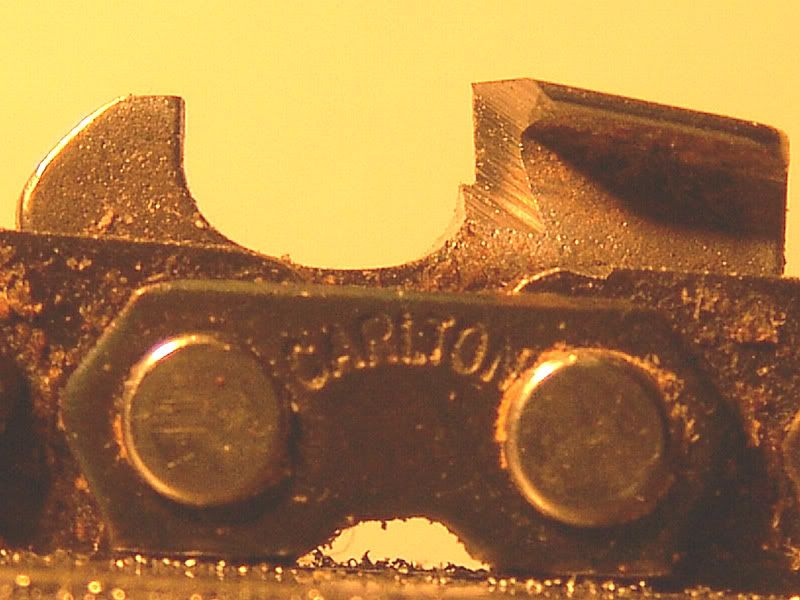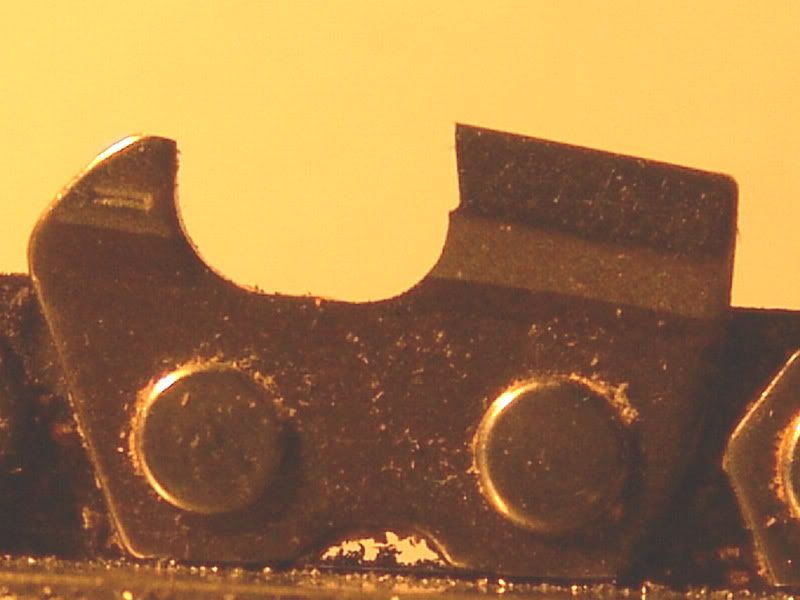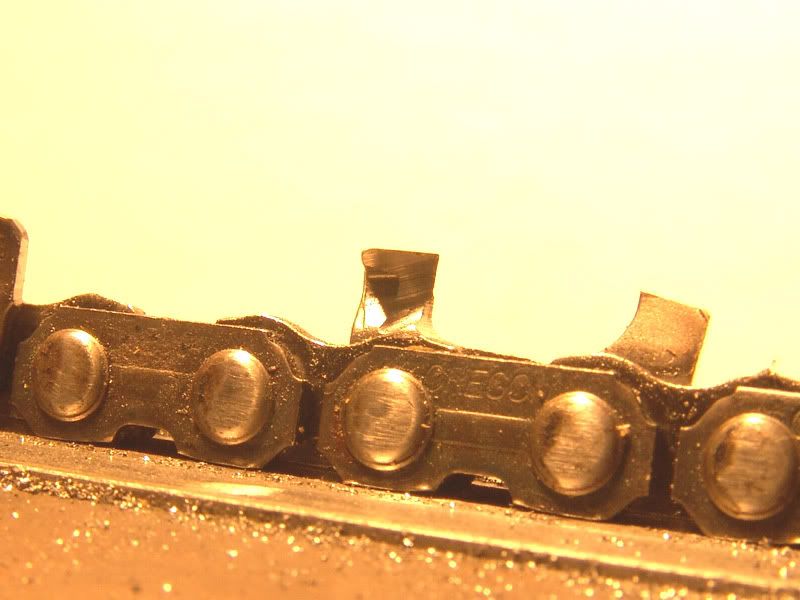Chain grinding
Bobcat:
The Oregon website has detailed illustrations of the proper angles for all of their chain types. I printed their manual for the Oregon 511 grinder, which seems identical to my Tecomec grinder. I don't like the way they say to do the depth gauge (raker, or drag) grinding. They say to use the slotted filing gauge to file one to the correct height, then adjust the grinder depth gauge to this height. Every chain grinder I have ever seen already has a built-in micrometer which lets you adjust the machine to grind each raker to within a couple of thousandths. One simply must first calibrate the grinder's depth adjustment. You need a hard object of known thickness, something about the size of a domino. Let's assume it is 3/8" thick. With a properly dressed jointing wheel (the wide flat one) in the (turned off) grinder, lower the wheel until it rests on the chain vise. Now turn the grinder depth adjusting screw until it touches its stop. Raise the grinder, place the 3/8" piece on the vise, and lower the grinder to the 3/8" piece. The depth adjusting screw now can be screwed down to contact its stop. If you first attach a pointer to the bottom knob used to adjust the tension on the adjusting screw, you can measure the amount of turning (the total number of knob ridges) required to lower the grinder the 3/8" distance. I attached to the lower knob a short length of a red plastic capillary tube that came with a spray can of brake cleaner. If you count the number of ridges on the knob, then you can determine the change in height per ridge. Mine happens to be .005" per ridge. After I sharpen a chain, I rest the (stationary) jointing wheel on a typical tooth, screw down the depth screw to contact its stop, move the tooth to put the raker under the wheel and clamp the vise, then move my eyeball so that I am sighting the red pointer to the nearest ridge (or groove), then back off the adjusting screw six ridges (or grooves) for a .030" depth, for example. Once this setting is made, I grind each raker in turn, knowing that the depth is correct to within a couple of thousandths. The depth gauge is one of the most critical components of the saw tooth, but it frequently doesn't get the attention it deserves. Filing them by hand is difficult to do with the necessary precision.




























































